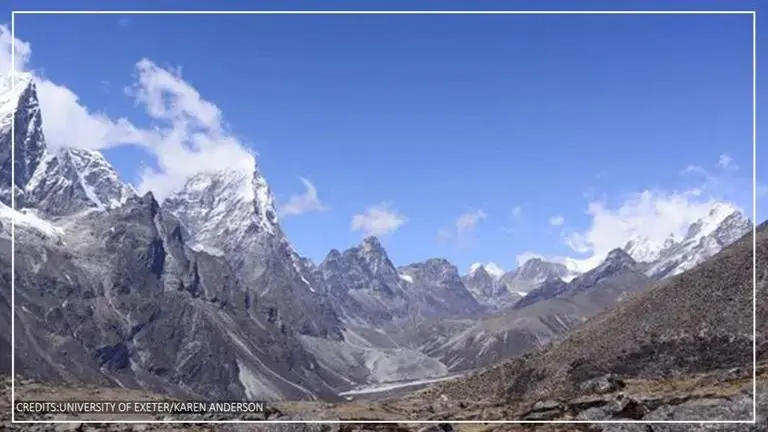Updated 11 January 2020 at 14:54 IST
As global warming intensifies, rate of grass growing around Mount Everest increases
As the world temperature is increasing, the rate of grass growing on Mount Everest is also increasing which can make the flood situation worse in the regions
- India News
- 3 min read

As the world temperature is increasing, the rate of grass growing on Mount Everest is also increasing. Scientists say that the results of these grasses and bushes can not be told exactly, but they can definitely make the flood situation worse. Grass and shrubs are growing rapidly in areas where the temperature has increased.
Research published in the journal Global Change Biology has claimed that 190 million people can cope with the scarcity of water from the mountains. The Exeter University of Britain who did the research, claims; Grass growing at an altitude of 6000 meters above sea level. According to the researchers, the snow melting rate doubled between 2000 and 2016, needing attention.
Although the water supply from the glacier may be less, the snow and grass growing between the trees can act to increase flooding in the Hindu-Kush Himalayan region. This part is spread over 4.2 million square kilometres. It is the 10th largest river system in Asia. Over 1.4 billion people depend on water collected in the region, and changes to water cycles and supplies could have far-reaching impacts on communities in different countries, the research, published in the Global Change Biology journal, said.
Advertisement
Snow melting rate doubled in 16 years
Scientists have taken photographs of the grass and small bushes that grow here during the snowfall. Photographs taken from NASA's Landsat Satellite from 1993 to 2018 have been researched by researchers at Exeter University, UK. According to the researchers, the grass is growing at altitudes up to 6000 meters above sea level. According to the report, as the turn of the century, the rate of receding of the Himalayan glacier had doubled. A quarter of the ice has melted in the last four decades.
Researcher Karen Anderson says that there has been much research on how fast the Himalayan glaciers are lagging behind. The rate of snow melting has doubled between 2000 and 2016. It is very important to understand and keep an eye on the damage of snow on the mountains. According to Anderson, as fast as small plants are encircling the snowy part of the Himalayas, this is bad news because the frozen ice on the plants will rapidly melt and create flood conditions.
A 2019 study from Columbia University found that Himalayan glaciers have been losing almost half a meter (1.6 feet) of ice each year since the start of this century. This is already resulting in flooding for local communities -- and could ultimately result in drought.
Advertisement
(with inputs from agencies)
(image credits: Dr Karen Anderson - Geography Exeter - University of Exeter)
Published By : Varsha Chavan
Published On: 11 January 2020 at 14:54 IST



